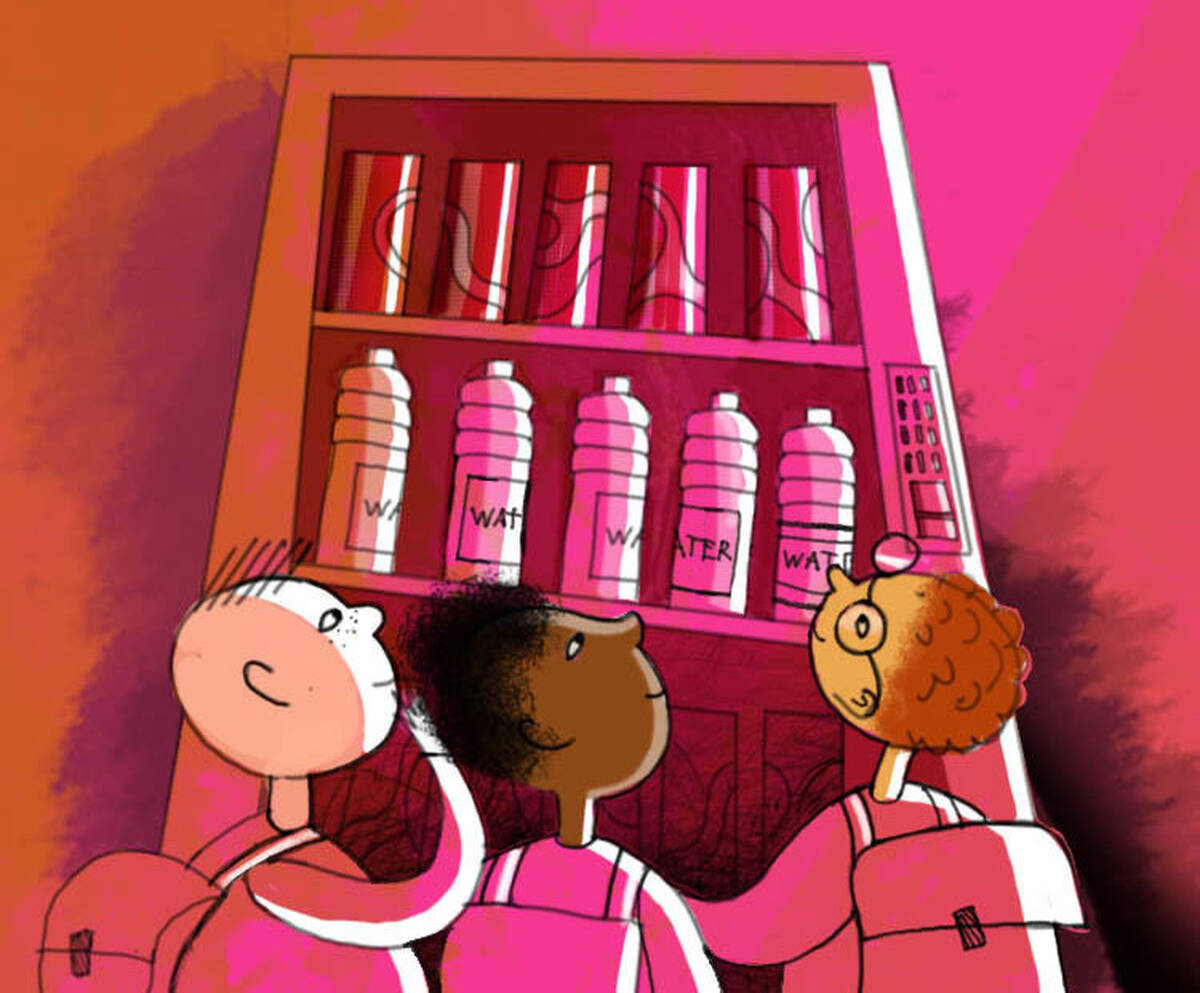Marketing Sep 10, 2018
A New Way to Persuade Kids to Drink More Water and Less Soda
Getting children to make healthy choices is tricky—and the wrong message can backfire.

Yevgenia Nayberg
Parents and schools have devised all sorts of strategies to convince kids to eat and drink healthier. Some try lecturing children about the dangers of junk food; others offer rewards for finishing their vegetables or try to present healthy food in an enticing way. But given that many kids still consume a lot of sugary snacks and sodas, it’s clear that adults haven’t come up with a perfect solution.
In a recent collaboration with UNICEF, Michal Maimaran and colleagues tried a different approach. To encourage children to drink more water, they installed posters in schools in Panama that linked drinking water to various goals, such as being healthy, smart, or popular. When the association made sense—the link to health, for example—kids bought more bottled water at school than they did before the posters went up.
But the kids didn’t fall for just any argument to drink water. If the posters promoted a link that did not make sense—suggesting, for instance, that water consumption was associated with making friends—water sales slightly dropped.
“We see suggestive evidence that this can backfire,” says Maimaran, a research associate professor of marketing at Kellogg.
Overall, however, the results suggest that “subtle attempts to persuade children can have a profound effect on their actual purchase behavior,” Maimaran says. And because the study was performed in a natural setting rather than a lab, she adds, “it tells us that this can work in the real world.”
Subtle Persuasion
Getting kids to eat and drink healthier is a major challenge. And the stakes are high.
Unhealthy eating habits increase the risk of problems such as obesity down the road. “The long-term consequences are very important” for children, Maimaran says. “The earlier they start to have a healthier lifestyle, the higher their chances of continuing a healthier lifestyle.”
The results of various strategies to promote such habits have been mixed.
For instance, in an earlier study by Maimaran and a colleague, when four- to five-year-old children heard stories suggesting that a certain food was healthy or could make them smart, they ate less of that food than kids who heard the food was tasty. However, other experiments have been more encouraging. Another research team reported in 2013 that preschoolers who learned about nutrition concepts ate more vegetables at snack time. Other researchers have found that putting photos of vegetables on elementary school lunch trays encourages healthier eating.
“Subtle attempts to persuade children can have a profound effect on their actual purchase behavior.”
For this study, Maimaran collaborated with Szu-chi Huang of the Stanford Graduate School of Business, Daniella Kupor of Boston University’s Questrom School of Business, and Andrea Weihrauch of the University of Amsterdam. The team partnered with UNICEF, which was interested in increasing the amount of water children drink.
The researchers decided to try linking water consumption with different goals that kids might want to achieve. They designed four posters, each of which showed the message “Drink Water” and an illustration of two children holding bottles of water. One poster also said “Be Healthy” and included pictures of fruits and vegetables; a second said “Learn Faster” and showed numbers and a book; a third said “Make Friends,” with pictures of other kids; and the fourth had no additional message.
The assumption was that health-related goals were strongly connected to drinking water, intelligence was moderately connected, and popularity was weakly connected. By testing a range of goals, the team could find out if linking water consumption to any goal would encourage the behavior—even if the association didn’t make much sense—or if the effect depended on the strength of the link.
A Message That Increases the Amount of Water Children Drink
Field assistants in Panama put up one version of the poster at each of four private elementary schools. At each school, the team placed 240 posters in locations such as classrooms, hallways, and the cafeteria; some were posted near kiosks where kids could buy bottles of water, as well as other drinks such as sodas, and food. Kiosk operators reported water-bottle sales to the team for one month before the posters were installed, one month during which the posters were up, and one month after the posters were taken down.
In the school with “Be Healthy” posters, bottled-water sales increased during the month the posters were in place from an average of 25 to 33 per day, the team found. In the school with “Learn Faster” posters, sales stayed roughly the same. And in the “Make Friends” school, sales decreased from 78 to 63 bottles per day, though the change was not statistically significant. When the researchers controlled for temperature and humidity, the same trends still emerged.
The results suggest that kids are persuaded by messages that rely on a natural association between the action and goal, such as between being healthy and water, Maimaran says. But if the association between the action and the goal is not strong enough, such as between being smart and water, kids are not persuaded. And if the link doesn’t make much sense, such as the link between having friends and water, the strategy might backfire—perhaps because the children think they are being deceived.
Surprisingly, bottled-water sales dropped in the school where the poster had no additional message beyond instructing them to drink water, from an average of 13 to 6 per day. Maimaran speculates this is because kids may dislike being told what to do without a reason.
Making Long-Term Changes in Healthy Choices
Once the “Be Healthy” posters were removed, bottled-water sales at that school dropped back to their previous levels. So researchers will need to explore other methods to change kids’ long-term habits. Leaving the posters up indefinitely is unlikely to be effective. “At some point, kids would just stop noticing them,” Maimaran says.
Instead, perhaps schools could combine the posters with other strategies such as classroom instruction or target younger kids to establish habits earlier. Maimaran’s team is now investigating other interventions in elementary schools and preschools to increase children’s consumption of healthy food.
And what about telling kids about the dangers of consuming too much soda and junk food?
Maimaran is skeptical of this technique. It might work with older kids who can understand the risks of eating those foods. But among young children, who may not know much about these products yet, such messages could create the opposite effect of curiosity and attraction.



